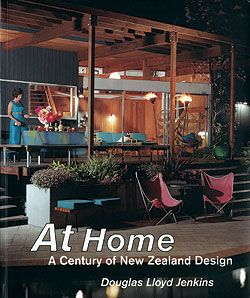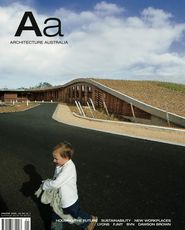BATES SMART
150 YEARS OF AUSTRALIAN ARCHITECTURE

Philip Goad. Thames and Hudson, 2004. $95
My first encounter with the work of Bates Smart in architectural discourse was via the last chapter of Robin Boyd’s polemic The Australian Ugliness. Boyd uses Bates Smart & McCutcheon’s rebuilding of Wilson Hall at the University of Melbourne (1952-1956) to describe the tendency towards “Featurism” in mid-century Australian architecture. Reading Philip Goad’s empirical study of Bates Smart’s one hundred and fifty years of practice, I now realize that this encounter could easily have occurred through the modest mid-century Modernity of the firm’s MLC building in Brisbane’s CBD (1955), which I admired as a student. For Queensland, the curtain wall technology pioneered by the firm in their Melbourne-based practice in the 1950s is overlaid with a modular brise-soleil. In Goad’s book the building is situated within the firm’s postwar development of the skyscraper type and the canon exemplified by the landmark ICI House (1955-1958) in Melbourne ›› By Goad’s own account this book is an ambitious project. It surveys the prodigious output of the firm from the arrival of its progenitor, Joseph Reed, in Melbourne in the 1850s to the contemporary practice of Bates Smart. Changes in aesthetics, economics, personalities, patronage and technology are charted across both the practice and the discipline of architecture. A substantial visual catalogue of drawings and photographs accompanies this detailed and insightful history. The chapters are arranged by chronological divisions but are overlaid with a discourse that situates the work of each period in relation to both theoretical concerns and practice realities. To this end George Tibbits, Miles Lewis and Julie Willis contribute chapters one, two and three respectively.
The book provides a unique way of understanding the impact of a single firm on the architectural fabric of the city of Melbourne. This impact is apparent at a number of moments, from the public institutions built for an emerging metropolis in the nineteenth and early twentieth centuries to the development of a postwar corporate architecture and, most recently, in the collaboration with Lab Architecture Studio on Federation Square.
This is not the first history of the firm, and in his introduction Goad imagines the book becoming an outline into which other more detailed studies might be added. As an account of architectural achievements in Australia over the past one hundred and fifty years, this is an impressive piece of scholarship. As the history of a single architectural lineage it is remarkable.
CAMERON BRUHN
AT HOME
A CENTURY OF NEW ZEALAND DESIGN

Douglas Lloyd Jenkins. Godwit, 2004. $65.
This is a carefully researched and clearly written book. The author, Douglas Lloyd Jenkins, is a scholarly historian of New Zealand design, who is also well known for newspaper columns and television programmes that have made the results of his research accessible to a wide public. While the book should appeal to an Australian audience for the insight it gives into the design culture closest to Australia’s own, it is the book’s exemplary approach to its material that really deserves our attention.
Lloyd Jenkins eschews the usual parade of heroic designers and masterpieces that RADAR BOOKS generally figure in architectural history for a more inclusive approach. Focusing on what he calls - sometimes rather archly - “the New Zealand home”, Lloyd Jenkins is concerned with how domestic environments are made not by architecture alone, but rather by architecture in conjunction with other design and craft practices. Thus, the names influential in twentieth-century New Zealand domestic design are not confined to the usual list of architects, but also include studio potters and makers of commercial ceramics, the designers of wall papers and fabrics, the manufacturers of furniture, and so on. These are presented in a decade-by-decade sequence ›› The key names of New Zealand design are introduced (many are designers and crafters of household goods more or less neglected before Lloyd Jenkins’ ongoing junk-shop archaeology and archival research) but what really distinguishes the book is its commentary on how the work of these innovators came to have effect in the mass market for houses and household goods. Thus the roles of popular magazines and of mass and niche retailers in promoting attitudes to domestic design are analysed for their significance.
Lloyd Jenkins also attempts to locate his narrative in a wide social and economic context. This approach avoids glib ascriptions of particular national character to New Zealand design. At Home nevertheless acknowledges that a desire for local identity has driven many design professionals, even if many of them cheerfully plagiarized the designs they saw on travels or in international magazines. The obsession with the local has particularly gripped the imagination of architects when it has taken the form of a beautifully crafted timber shed - New Zealand architecture’s ideal type for at least the last fifty years. In his epilogue Lloyd Jenkins notes the limitations of this ideal and the values that go with it. Looking forward, he sees the future of design in New Zealand not in the pursuit of such iconic forms, but in the intimacy - enforced by the country’s small scale - of craft, design and architecture with each other. In the new modes of manufacturing economy, this situation can be embraced as an important advantage.We might well wonder how the Australian condition compares ››
PAUL WALKER















